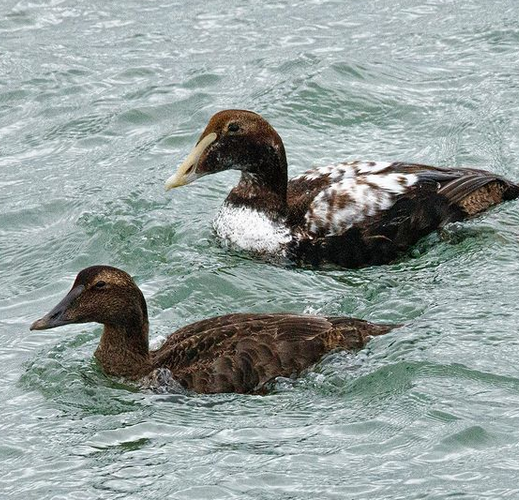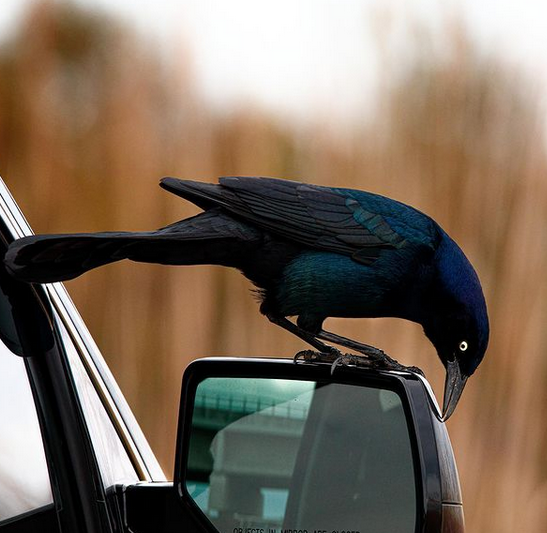Tag Archives: jennettes pier bird watching
Spending time with a Common Eider on Jennettes Pier in Nags Head NC
By: Sally Siko
Last week, I returned to the OBX of North Carolina to lead a birding trip.
As always, I arrived a couple of days early to scout out the area to make sure all of the expected species were where they were supposed to be.
After spending the day on Pea Island, I headed up to Jennettes Pier to see if I could catch a glimpse of some sea birds hunting for a meal on the Atlantic.
There was plenty to see including Black Scoters, Common Loons, Gulls and Grebes but most of them were flying far offshore. Only the Brown Pelicans were swooping in at close range.

By 4:45, daylight fading fast I was about to leave when this lovely Common Eider hen flew in and landed alongside the pier.
Although I certainly wish I could have photographed this beautiful bird from a lower vantage point, the last few minutes of golden hour light was simply too good to pass up for catching these portraits.
Measuring 25-27 inches in length with a wingspan stretching 41 inches, Common Eiders are the largest species of duck in the northern hemisphere.
Their size non withstanding, Eiders are agile swimmers. They spend a great deal of their time at sea diving beneath the waves in search of mussels, clams, scallops, sea urchins, starfish, and crabs resting on the ocean floor or clinging to rocks and jetty’s.
Because their prey is often located in shallow water, they are more easily found then other sea duck species when birding on the shoreline.
Common Eiders are a wintertime visitor to the coastal areas of NC.
Interestingly, 95% of sightings of this species in the Tarheel State comprise of adult females and immature males while the bulk of adult males appear to spend the winter in New England and Newfoundland.
Look for Eiders in coves, near inlets and especially around bridges, piers and rock jetties. Basically anywhere along the oceans edge where mussels and crabs are present.
These beautiful ducks will stick around NC until early April so we’ve still got plenty of time to enjoy them.
Aren’t they wonderful?
🙂
Photos by @sally_siko of @birdwatching_nc on my mighty mirrorless monster, the @canonusa #R5
Common Eiders at Jennettes Pier in Nags Head NC
Once we wrapped up our visit to the Pea Island NWR, the group and I headed out to Jennettes Pier in Nags Head, NC to see I could provide some good views of any pelagic species hunting on the ocean for my guests.
A few minutes after walking to the end of the pier, we were delighted to see these four Common Eiders floating on the waves!
It was an incredible experience to be able to share these ducks with the group as they were life birds for everyone.

The plumage of the Common Eider varies in several stages while the bird is growing into an adult.
During their three years, males will molt their feathers eight times, changing their color from a juvenile blackish brown to an adult chocolate brown plumage mottled with white in winter (as seen in these photos).
When breeding season arrives, they’ll morph into a handsome black and white plumage combination with a small area of light emerald green on their back and sides of their heads.
Changes in female plumage are less dramatic: from a juvenile blackish brown, the hen then becomes a warm reddish brown as an adult.





Common Eiders nest in large colonies along much of the coast of northern North America, south to Maine in the east and south to the Alaska Peninsula in the west.
During the wintertime they migrate south to spend the cooler months in warmer waters. Here in the east, they’ll winter from Greenland to the Gulf of St. Lawrence and south along the Atlantic Coast into Virginia and North Carolina. In the west, they’ll spend the in winter southern Alaska.
Although they are not a common sight in the waters off of North Carolina’s Atlantic coast, they may be spotted from early November through April.
Look for them paddling near jetty’s & piers and even under bridges hunting for a meal.
Photos by @sally_siko of @birdwatching_nc on the fabulous full frame @canonusa
#5Ds
Razorbills offshore in Nags Head NC
Here’s another one I did not expect to see during my last birding trip to the OBX earlier this month, the Razorbill!
I caught a glimpse of a few of these beauties while standing on Jennettes Pier in Nags Head NC.

Unfortunately once again, the birds were very far offshore so I was unable to capture any good photographs from my vantage point. It’s ok though because gosh it was exciting to see Razorbills from the shore!
Truly this was a case where the value of the photos (to me) are the documentation of the moment vs. a pleasing aesthetic.
Besides, I’ve got the rest of my life to try and capture a “beautiful” portrait of another one. I’m cool with waiting for that opportunity 😉

Dressed in a tuxedo of black and white feathers, Razorbills are distinctive looking birds even during the wintertime when their rocking that “drab” plumage. Like many pelagic species, they’ve got large webbed feet and powerful wings to propel their sleek bodies underwater in pursuit of prey.
Although they prefer to hunt for fish and crustaceans at around 20ft below the surface of the water, they’re capable of diving to depths of approaching 60 feet!

Razorbills breed from the Arctic south to Maine. During the wintertime they may be found in the open waters of the North Atlantic Ocean well offshore, mainly from Grand Banks of Newfoundland to southern New England, and in steadily increasing numbers southward into Virginia and right here in North Carolina.

Look for them dotting the oceans horizon from December through March.
Photos by @sally_siko of @birdwatching_nc on the fabulous full frame @canonusa
#5Ds
Northern Gannetts in Nags Head North Carolina
Another cool looking bird I spotted while standing on Jennettes Pier in Nags Head, NC was this Northern Gannet.
These guys are huge and were quite entertaining to watch as they glided like B-52s over the ocean, pausing only plunge into the water below to catch a meal.
Once again (like the Dovekie from yesterday’s post), it was tough to capture a pleasing photograph of these handsome creatures because of the distance. Yet, I was thrilled to see them and at least get some kind of photograph of the sightings.

Measuring in at about 3.5ft from wingtip to wingtip, Northern Gannets are one of the largest seabirds in North America.
Both male and female adult Gannetts are dressed in a bright white, yellow and black plumage which looks quite beautiful when viewing them against the backdrop of the Atlantic Ocean.



Their body’s are missile-like in shape with long, thin, and tapered wings which they will tuck up against their bodies allowing them to dive quickly into the sea once they spot a fish.
They’ve got pointy bills and large webbed feet which make them perfectly suited for a life spent below the waves in pursuit of underwater prey.

The Northern Gannet is a winter resident of the waters off of the coast of North Carolina. You can catch a view of these impressive birds by standing on the beach looking out over the ocean from October through late April/early May.
Usually they hunt right offshore but to get the best view of one be sure to bring a good spotting scope or long lens of 600mm or more to really get a great look at these gorgeous birds!
Photos by @sally_siko of @birdwatching_nc on the fabulous full frame @canonusa
#5Ds
A rare encounter with a Dovekie in eastern North Carolina
While standing in a light rain on Jeannette’s Pier while on a birding trip in Nags Head NC, I spotted this lone Dovekie paddling waaaaay offshore.
This smallest member of the Auk family was tough to get a clear photograph of as it bobbed and dove in the waves.
I hadn’t seen one before so it was pretty neat to finally get a good look and a few photos, even if they aren’t the best pics lol!

These little birds feed mainly on crustaceans and zooplankton, but will also dine on invertebrates and small fishes swimming near the surface of the water. That being said,they can certainly dive much deeper to snag a meal if needed. Using their wings for propulsion, they steer with their feet while diving underwater, in some cases down to depths of 100 feet!
They’ll capture their prey one at a time with their beak then ascend rapidly in a zig-zag pattern toward the surface where they can consume their food before repeating the process.


Dovekies are Arctic circle breeders with large colonies residing in Greenland during the summer. They spend the winter months in the Atlantic Ocean south/southwest of Greenland, off the east coasts of Canada, New England, and in offshore waters of the mid Atlantic States of the US.

Since they primarily forage in the open ocean, the best way to see one here in North Carolina is to take a pelagic trip departing from the Cape Hatteras area during late January or February.
Or maybe you can lucky like I did by walking out into a pier with a long lens or a spotting scope in hand on a rainy afternoon.
After all, half the fun of birding are the unexpected surprises found along the way 😉
Photos by @sally_siko of @birdwatching_nc on the fabulous full frame @canonusa
#5Ds
Not your average beach bird: The Boat tailed Grackle in North Carolina
Once we finished birding at the Pea Island Lifesaving Station in the Outer Banks of NC, I said goodbye to my guests and made my way across the short dune path to the parking lot.
Arriving at my truck, I was just about to pack up my camera when this Boat tailed Grackle flew in and landed on the mirror of the SUV across the way.

I couldn’t believe how close he was and was delighted to finally get some clean photos of this handsome bird in decent light.
He was quite curious about the vehicle that he was standing on and kept pecking at the glass and metal.
Better still, every few minutes he’d puff out his feathers and call out loudly to an unseen companion in the reeds nearby.




After spending a few minutes with the first bird, I drove up to Jeannette’s Pier and was greeted with the sight of a whole flock of Grackles perched on the railing.
The neat thing about these pics is that the birds shown here were quite tolerant of my presence on the pier allowing me once again to capture some nice portraits of their faces at a relatively close range.


Boat tailed Grackles are a permanent resident of North Carolina boasting a wide range that stretches from the coastline of New York, down into Florida and into east Texas.
They are found almost always near sources of water such as wetlands and coastal marshes, waterfowl impoundments, lakes, rivers, both the Atlantic and Gulf beaches, ponds and mudflats.
These sharp looking members of the blackbird family are omnivorous with a diet of expected coastal fare that consists of mussels, shrimp, frogs, aquatic insects, snails, crayfish, and even crabs.
When grabbing a meal away from the water, they will feed on grasshoppers, caterpillars, and the eggs of other birds.
During the winter months, they will supplement their diet with different kinds of seeds and grain to make up for the protein loss that may occur when their favorite prey becomes scarce in cold weather. This is why you’re likely to see more of them at your feeders in the wintertime if you live on the east coast.
Photos by @sally_siko of @birdwatching_nc




